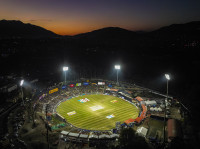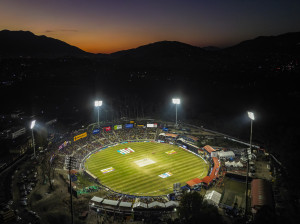Editorial
The NPL effect
The success of Nepal Premier League could result in potentially endless benefits for the country.
The Nepal Premier League, which kicked off on Saturday, has taken the country by storm. Never before had a national-level tournament created such buzz among domestic and international audiences. Nepali cricket fanbase, who grew up watching the Indian Premier League, are now ecstatic to have their own truly international franchise league comprising no less than eight teams. The fact that people from different parts of the country are travelling to the Tribhuvan University Cricket Ground to cheer on their favourite teams speaks volumes about the tournament’s mass appeal.
The ‘Festival of Himalayas’ features big cricketing names like former Indian opener Shikhar Dhawan, New Zealand all-rounder James Neesham, Dutch Michael Levitt, Namibia’s Gerhard Erasmus, and Australia’s Ben Cutting. Nepali cricketers—both national players and newcomers—will now get to rub shoulders with these global cricket superstars, which will greatly boost their confidence. The NPL will also hopefully offer these players enough financial incentives to pursue cricket as a profession. In fact, the recent all-format international success of the Indian national team is often attributed to the IPL, for some of the same reasons. The start of the NPL this year could thus mark a sea-change in Nepal’s success in international cricket.
The league will have a global audience after getting the Star Sports Network, an internationally established TV network, as the official broadcaster; and after partnering with the Twenty-first Century Media Sports, a company that has managed many international events. They will help showcase Nepal as a global cricket destination. No wonder Nepali cricket fans are upbeat. As one fan placard during Saturday’s opening match between Janakpur Bolts and Biratnagar Kings put it: “No matter who wins it is the victory of Nepali cricket.”
Done well, the NPL’s success will resonate much beyond the international sports scene. The vast majority of Nepali youths are looking to leave the country the first opportunity they get. They see no hope in their country. But when they see that cricketers and commentators and organisers from around the world are coming to their homeland to play as professionals, perhaps this feeling of disenchantment with their native country will go down a bit. Additionally, if Nepal can successfully pull off an international tournament like the NPL, there is no reason this welcoming country cannot host tournaments like the cricket Asia Cup.
But there will also be challenges. The Cricket Association of Nepal has taken up the monumental task of organising an eight-team tournament. The association’s history of managing similar tournaments is checkered. For instance, the CAN-organised Nepal T20 League in 2022-23 was marred by controversies even before it kicked off due to allegations about match-fixing. The body has also faced criticisms for negligence, delayed payments and incompetence. Even in the opening match of the NPL on Saturday, the association failed to manage the crowd, which in turn led to injuries. The next day, fans were seen running on to the cricket pitch at the completion of a match. In order to maintain the integrity of Nepali cricket, it is vital to minimise such incidents. Hopefully, the CAN is learning with every match.
The CAN must get the NPL right, for the tournament’s benefits are potentially limitless. The millions of international TV viewers of the NPL will get to see what a beautiful country Nepal is and this in turn could boost the country’s tourism prospects. The NPL itself, linked to a multitude of stakeholders, can create many profitable jobs, especially as other stadiums are built and the tournament expands to other parts of Nepal. Exciting times, indeed.




 8.12°C Kathmandu
8.12°C Kathmandu














